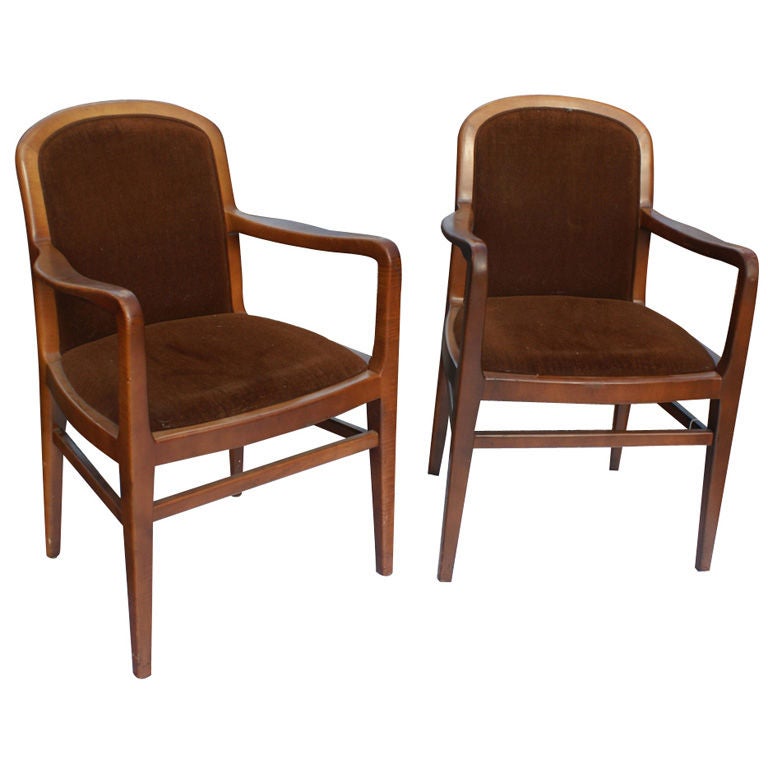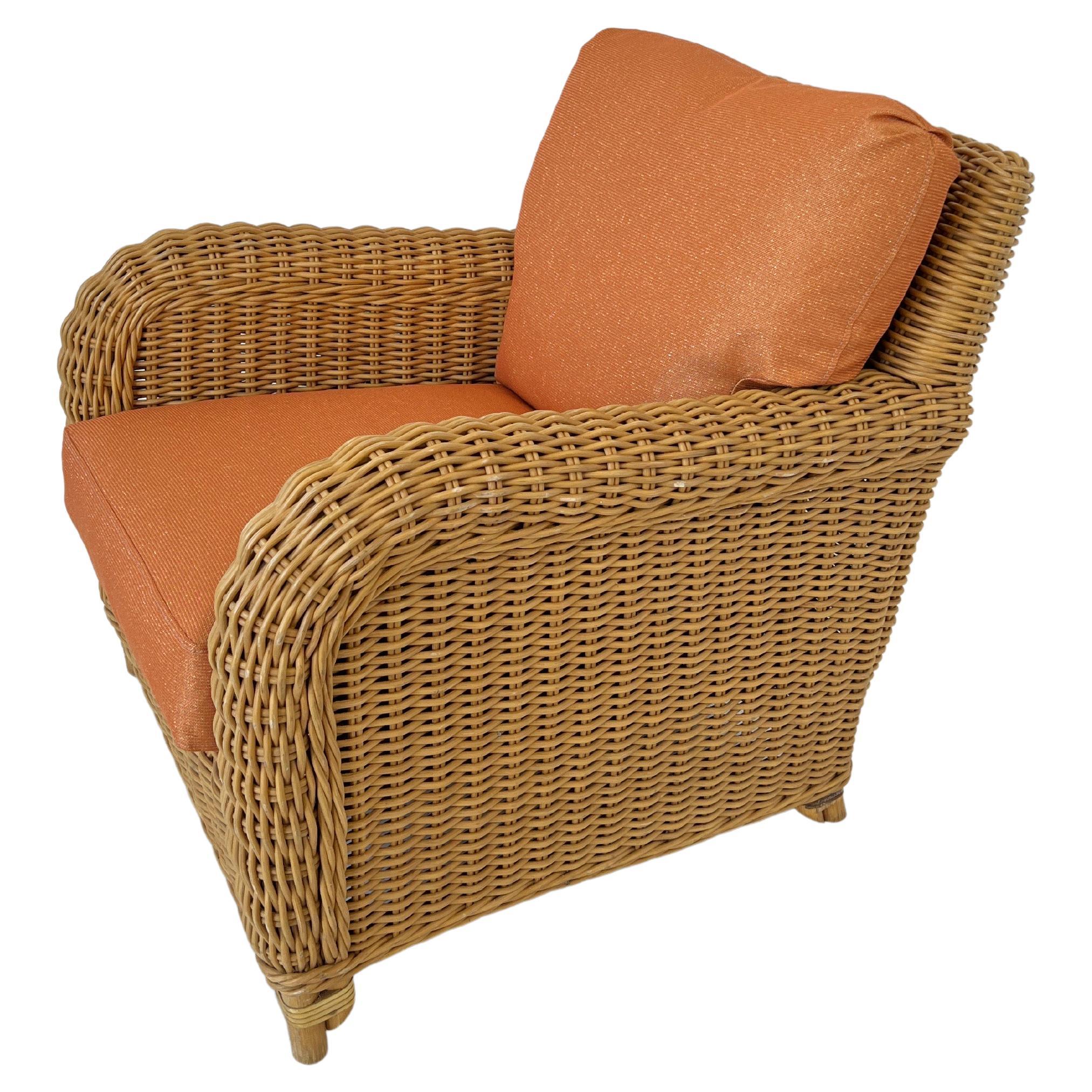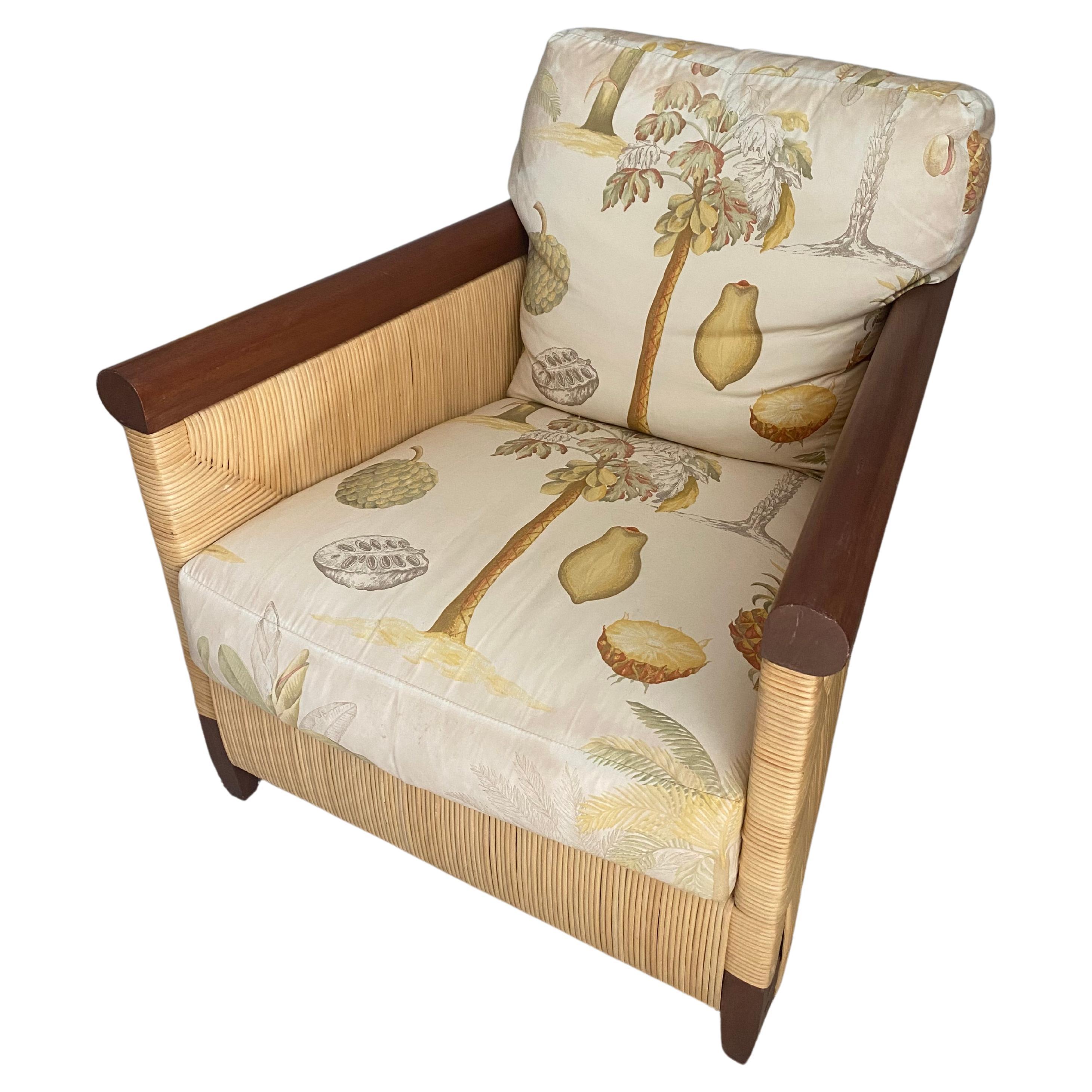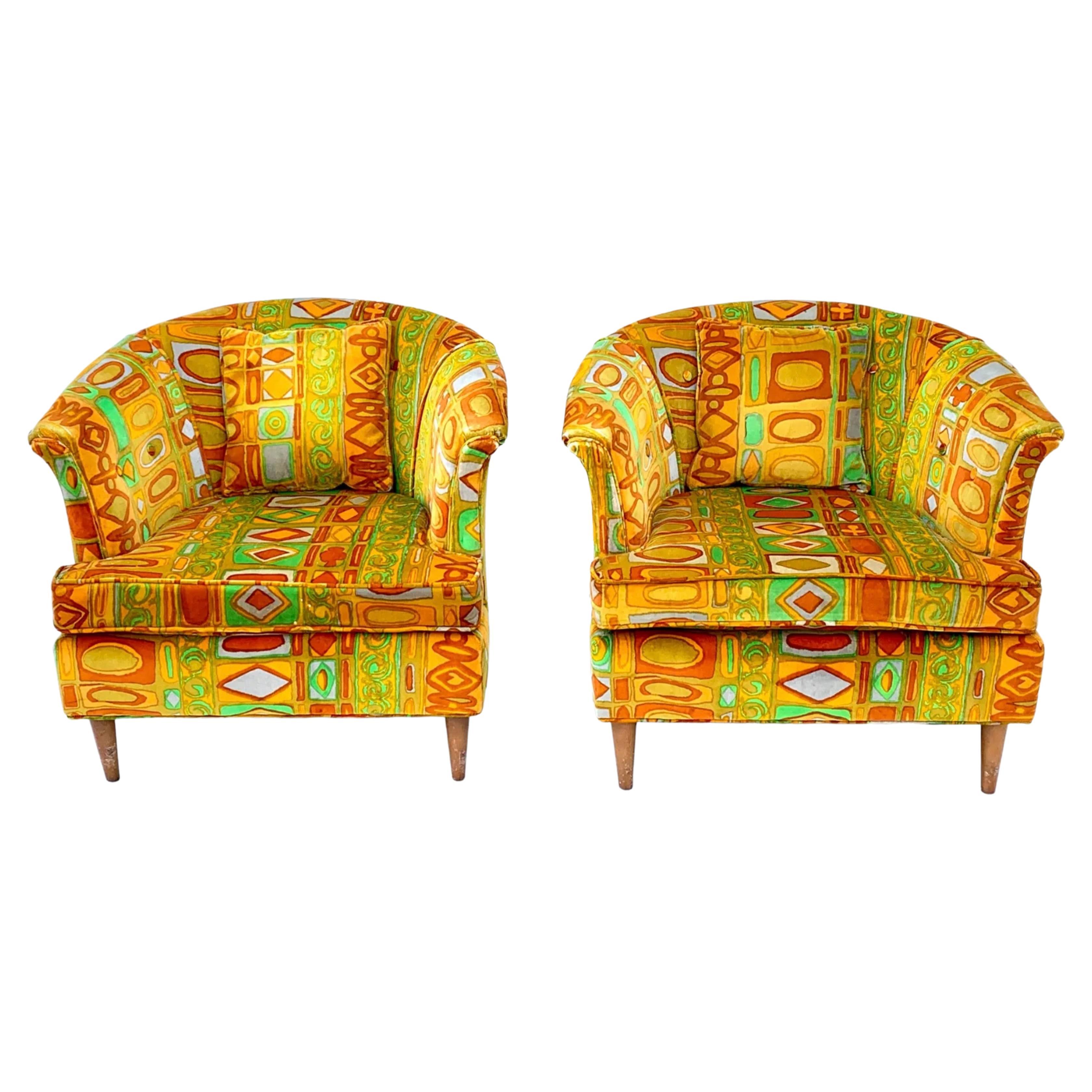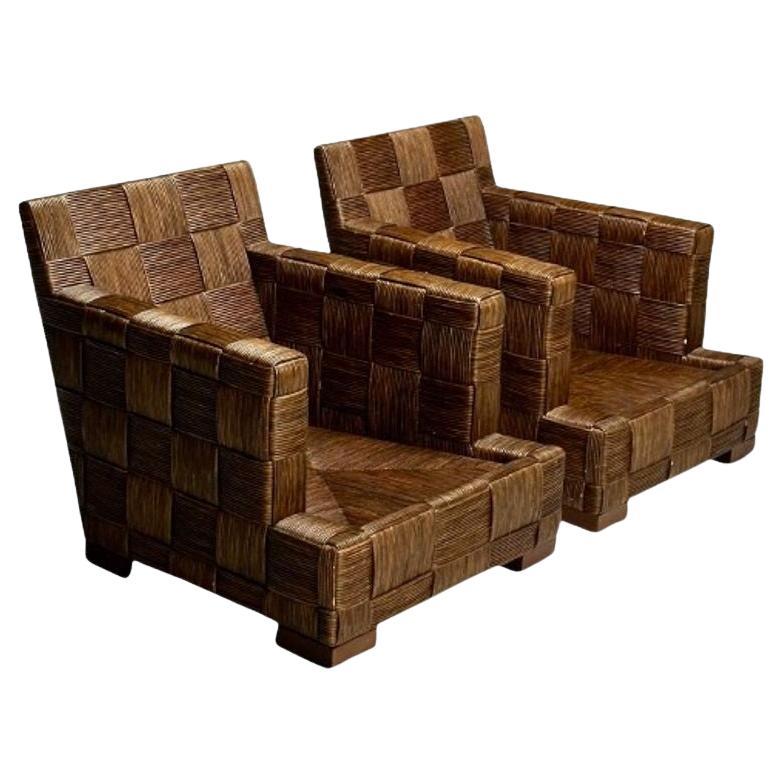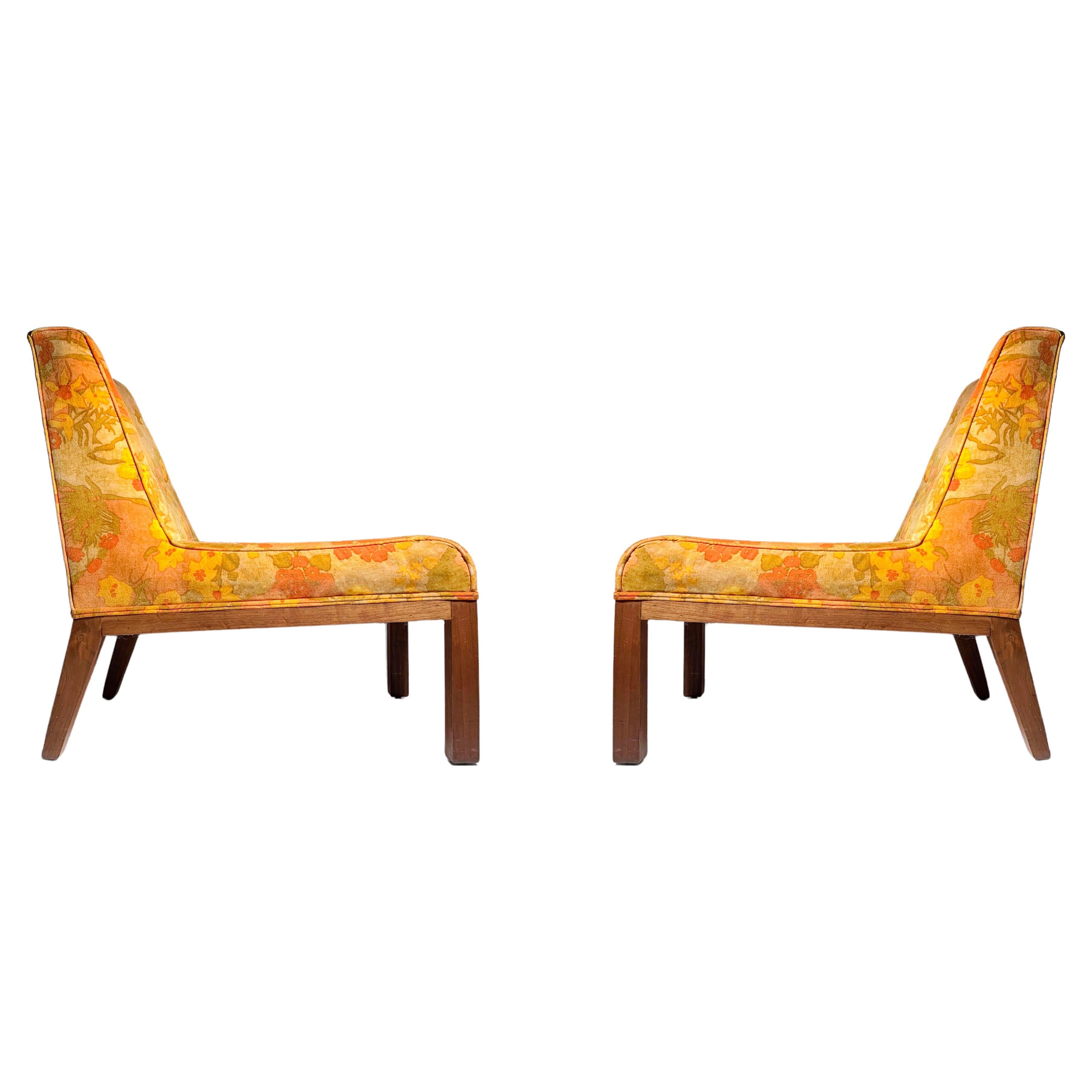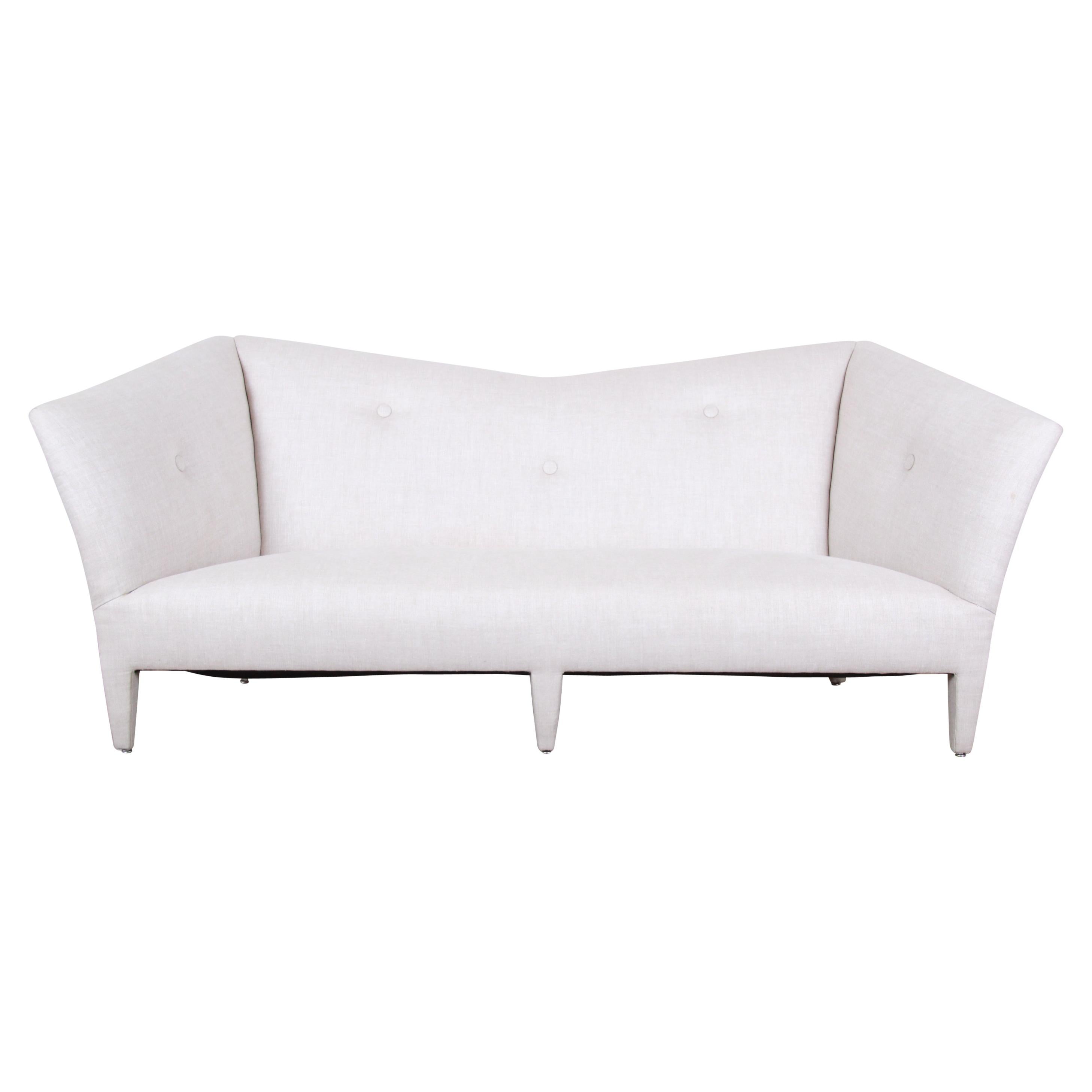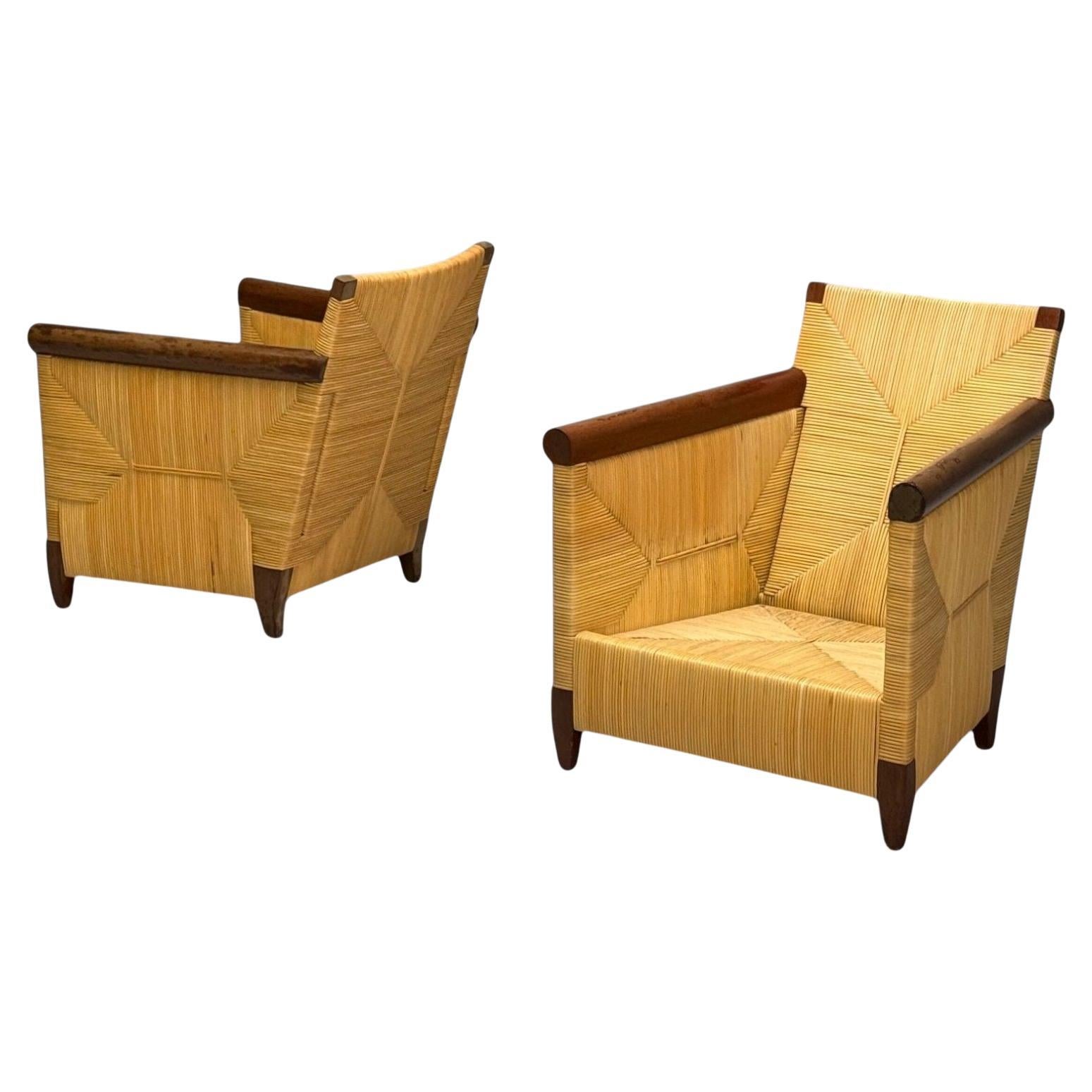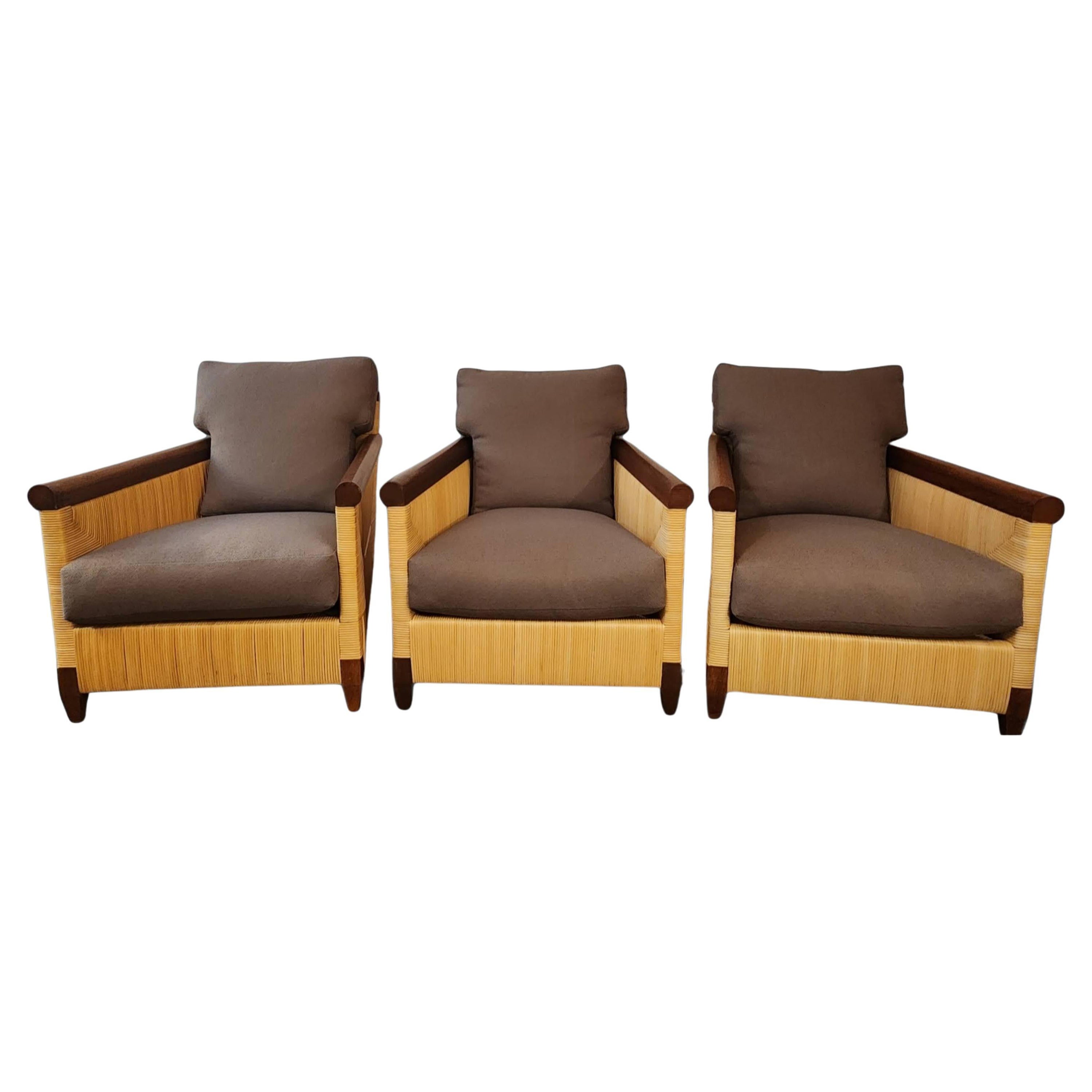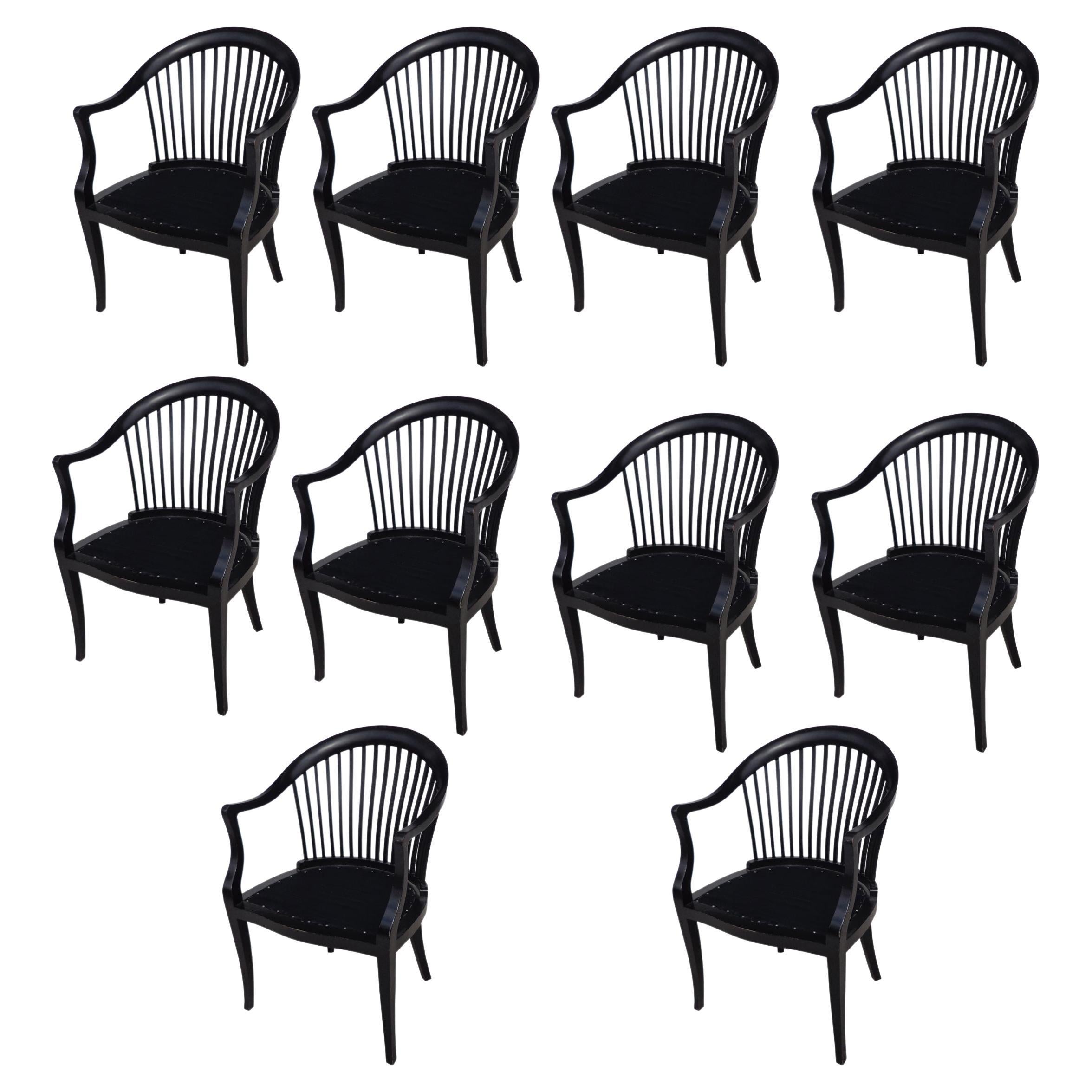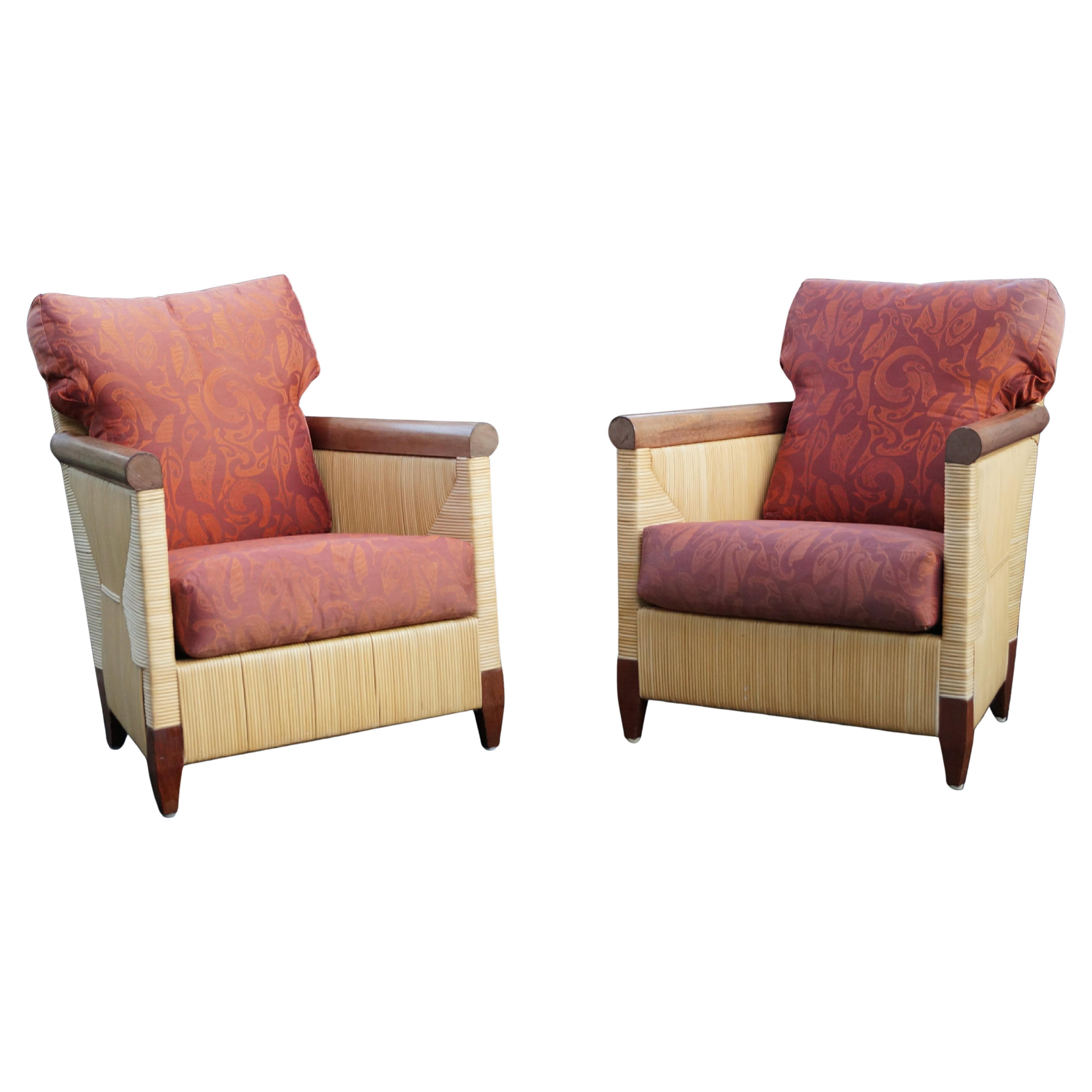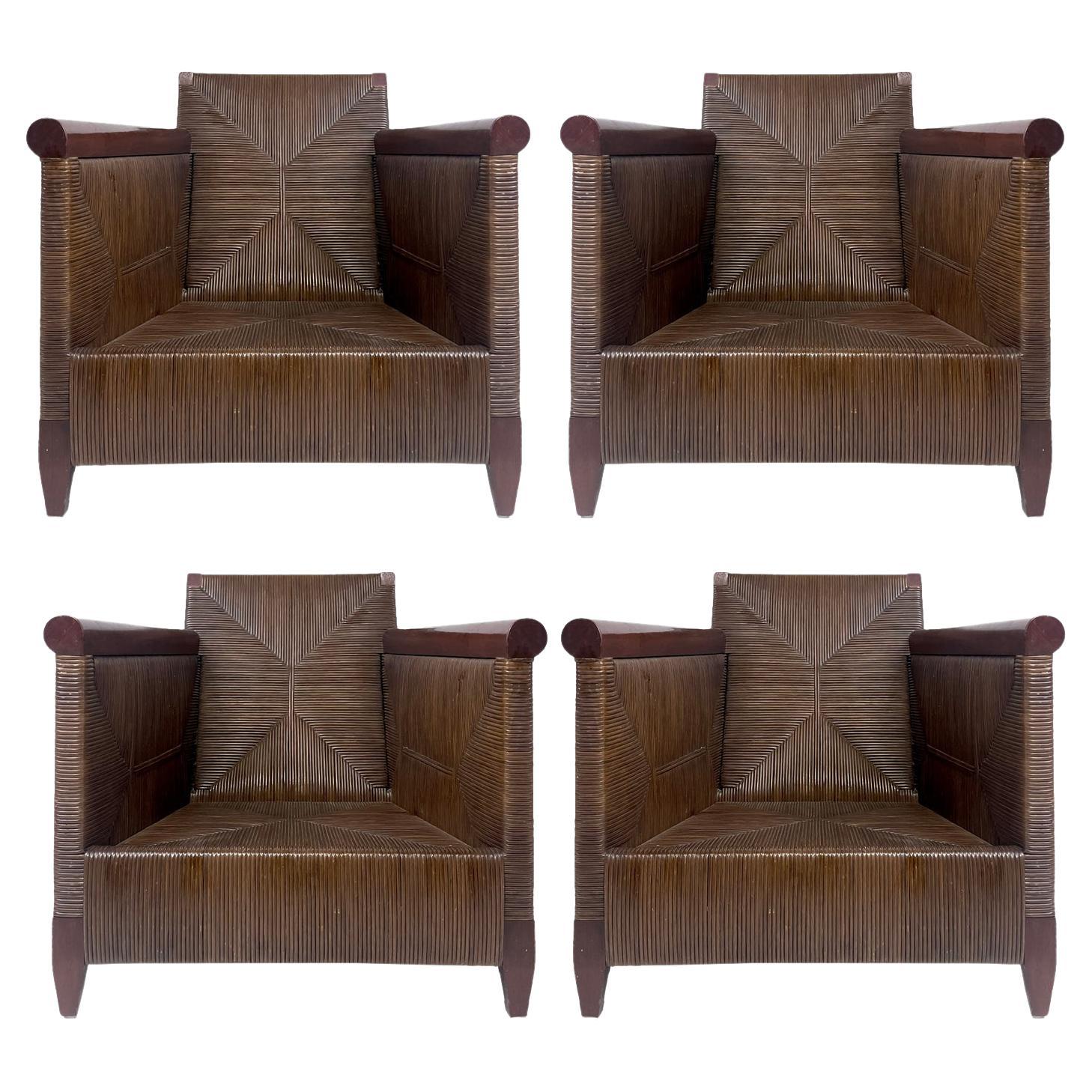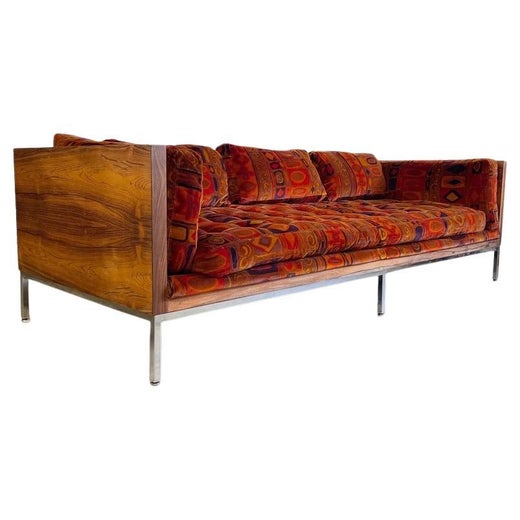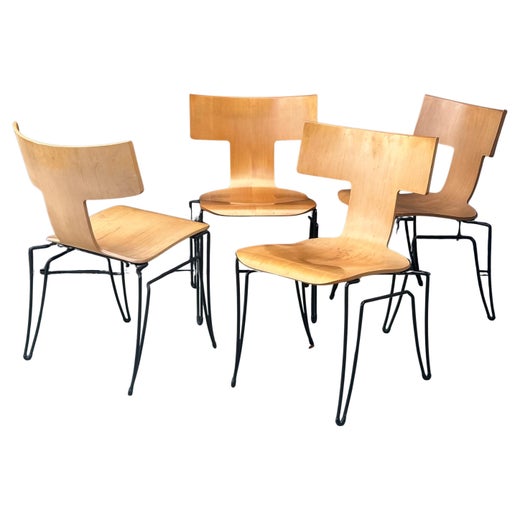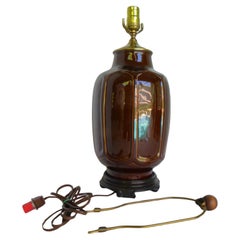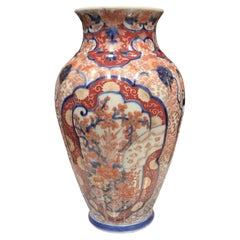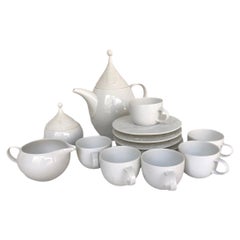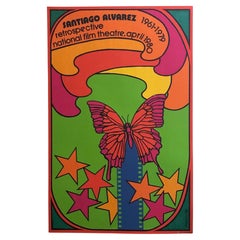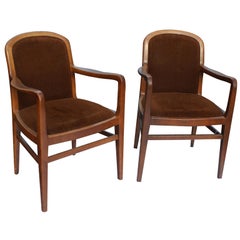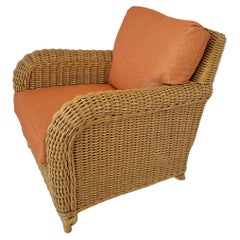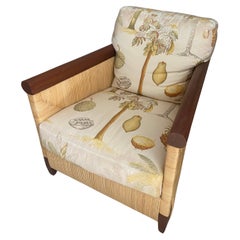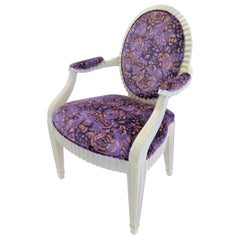
1980s Donghia John Hutton Grande Flute Fauteuil in Jack Lenor Larsen Velvet
View Similar Items
1980s Donghia John Hutton Grande Flute Fauteuil in Jack Lenor Larsen Velvet
About the Item
- Creator:
- Dimensions:Height: 37 in (93.98 cm)Width: 24 in (60.96 cm)Depth: 23 in (58.42 cm)Seat Height: 18.5 in (46.99 cm)
- Style:Mid-Century Modern (Of the Period)
- Materials and Techniques:
- Place of Origin:
- Period:1980-1989
- Date of Manufacture:1980s
- Condition:Reupholstered. Wear consistent with age and use. ,New upholstery fabric. Wear consistent with age and use. Edge rubs to finish.
- Seller Location:Miami, FL
- Reference Number:1stDibs: LU830122262032
Jack Lenor Larsen
Jack Lenor Larsen was a celebrated American mid-century modern textile designer born in Seattle. He fostered connections throughout the design and architecture industries beginning in 1950, and today, his influential eponymous design company is widely recognized for its muted hand-spun textured textiles. Larsen manufactured fabrics all over the world for more than six decades, using both traditional and modern weaving techniques.
Larsen initially studied in the architecture program at the University of Washington before he quickly realized he was instead interested in furniture design and interiors. He earned his MFA in 1949 from the Cranbrook Academy of Art — the go-to art school for design stars of the mid-20th century. The following year he moved and opened a studio in New York City where he launched his career.
For one of his first commissions, which was to design curtains for the Lever House — a New York City icon designed by Gordon Bunshaft and Natalie de Blois — Larsen created a linen and gold metal-themed weave to complement the building’s famed glass walls. He designed similarly magnificent textiles for the Phoenix Opera House, the Wolf Trap Theater and more.
Nowhere is Larsen’s profound impact on textile design more evident than at LongHouse Reserve, his house in East Hampton, New York. Modeled after a seventh-century Shinto Shrine, the home and its surrounding sculpture gardens opened to the public in 1992.
Larsen built LongHouse Reserve in collaboration with Charles Forberg. The property features sliding panels that showcase the revered artisan’s fabrics as well as works by Lucie Rie, Wharton Esherick, and Edward Wormley. The gardens feature sculptures by Willem de Kooning, Sol LeWitt and Yoko Ono.
Larsen had a solo exhibit at the Louvre in 1981. His work is held in the permanent collections of the Museum of Modern Art in New York, the Art Institute of Chicago and the Victoria and Albert Museum in London.
Find vintage Jack Lenor Larsen lounge chairs, sofas, and dining room chairs on 1stDibs.
Donghia
With distinctive style touches like gray flannel upholstery and overstuffed seating, American designer Angelo Donghia (1935–85) was a visionary leader of bold interior design and furniture in the 1970s and ’80s. Although Donghia lived only to age 50, by the time of his death from AIDS-related pneumonia, his name graced numerous furniture and decor companies, in addition to his own interior designs.
After graduating from Parsons School of Design in 1959, Donghia joined the interiors firm of Yale R. Burge, and his star rose quickly from there. By 1963, he had been appointed vice president and in 1966, partner — a move that came with a name change for the firm to Burge-Donghia Interiors. In 1968, he founded the fabrics and wall coverings company & Vice Versa, and in 1978 he founded Donghia Furniture. With this holistic approach, Donghia was able to oversee nearly every element of an interior design project, which, for him, spanned everything from corporate offices (notably PepsiCo’s world headquarters in Purchase, New York) to the Metropolitan Opera Club at Lincoln Center to residential interiors for clients such as Diana Ross and Ralph Lauren.
After he inherited Burge’s firm, he continued to develop its reach as Donghia Associates. He opened a series of showrooms around the country to offer his designs to a wider audience, who loved the company’s marriage of minimal forms with luxe materials. His silver-foil ceilings, mixing of eclectic textile patterns and plush furniture set trends and, through mass marketing, influenced the direction of American interior design.
“I feel that I’ve developed my own style that is as classic and minimal as the ’30s style it reflects,” the designer once told New York magazine. In 2015, the retrospective “Angelo Donghia: Design Superstar” at the New York School of Interior Design chronicled his influence on all facets of modern interiors, from furnishings to wall coverings. It’s an approach that still resonates today. Donghia continued to operate as a company after his death, acquired by the Rubelli Group in 2005. After it filed for bankruptcy in 2020 and closed its showrooms, its name, designs, archives and inventory were acquired by Kravet.
Find authentic Donghia furniture today on 1stDibs.
More From This Seller
View AllVintage 1980s French Modern Table Lamps
Ceramic, Porcelain, Pottery
Antique 1850s Japanese Edo Vases
Ceramic, Porcelain, Pottery
Vintage 1970s German Mid-Century Modern Porcelain
Porcelain
Vintage 1980s Cuban Modern Posters
Paper
Vintage 1980s Spanish Modern Vases
Ceramic, Pottery
Vintage 1980s Cuban Modern Posters
Paper
You May Also Like
Vintage 1970s American Armchairs
Fabric, Walnut
Vintage 1980s American Hollywood Regency Lounge Chairs
Fabric, Rattan
Late 20th Century American Modern Armchairs
Rush
Vintage 1960s American Lounge Chairs
Upholstery
1990s American Mid-Century Modern Lounge Chairs
Fabric, Cane
Mid-20th Century American Mid-Century Modern Lounge Chairs
Wood
